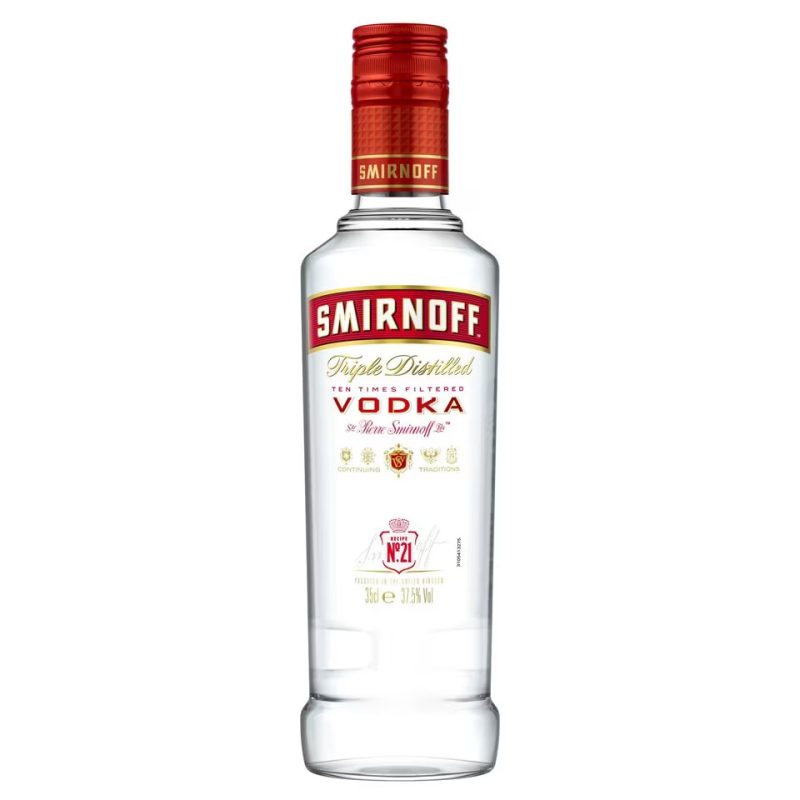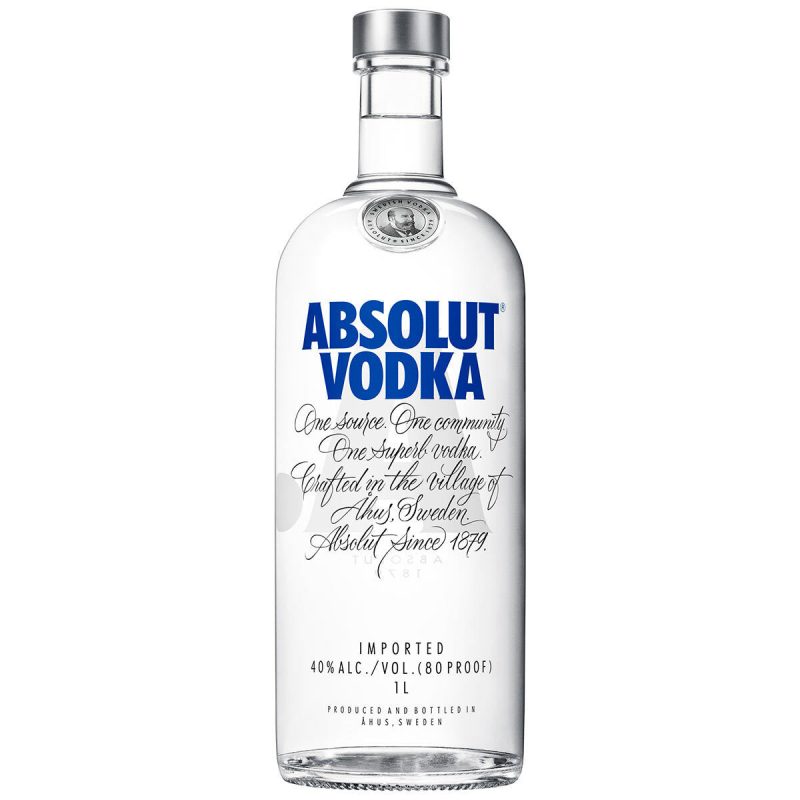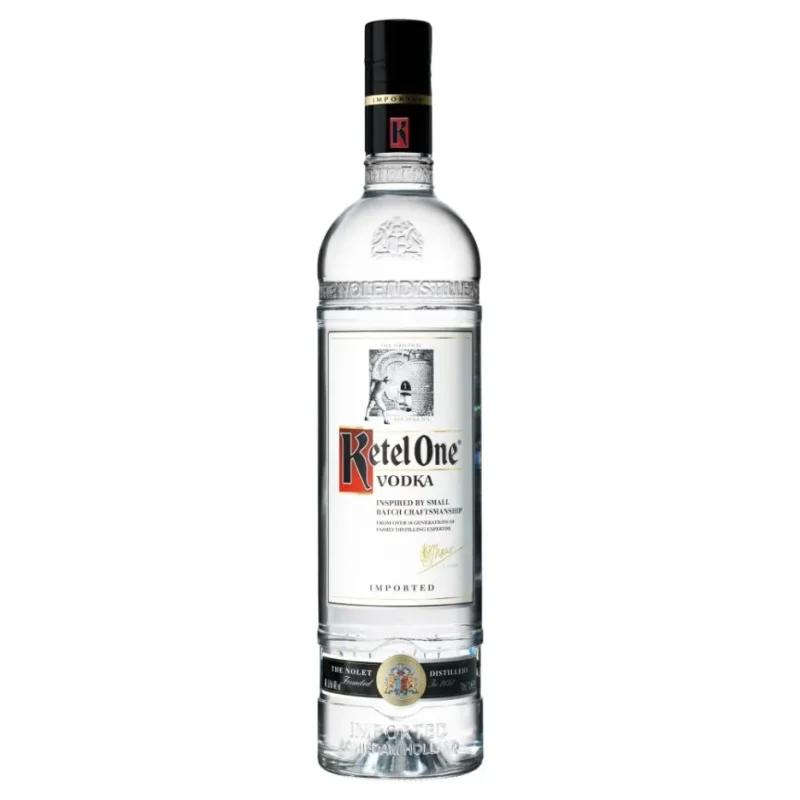Ever fancied becoming your own mixologist and crafting a liquid masterpiece that’s as smooth as your favorite playlist? Making vodka at home might sound like something straight out of a secret agent’s handbook, but trust us—it’s an adventure filled with quirky science, creative flair, and a dash of rebel spirit. Whether you're a DIY enthusiast, a savvy millennial, or a Gen Z looking for the next cool project to impress friends at your next shindig, this guide will walk you through making vodka at home in an easy, step-by-step fashion, full of insider tips, humorous nuggets, and plenty of "aha!" moments.
How To Make Vodka At Home Easy Table of Contents
Understanding Vodka: More Than Just a Hype Spirit
The Essential Equipment: Your Home Distillery Starter Pack
Gathering the Ingredients: The Foundation of Your Craft Vodka
Step-by-Step: Bringing Your Homemade Vodka to Life
The Science Behind Distillation: Unveiling the Mystical Process
Flavoring and Customization: Personalize Your Spirit
Safety Tips and Legal Considerations: Keep It Responsible
Vodka Myths Debunked: Separating Fact from Fiction
Troubleshooting and Expert Tips: Mastering Your Craft
Resources and Community Support: Your Next Steps
DIY Vodka FAQs: Your Questions Answered
Your Journey to Crafting Your Own Vodka Masterpiece
Looking For The Best Vodka? You'll Love These Vodka Guides...
Understanding Vodka: More Than Just a Hype Spirit
Vodka’s reputation often comes wrapped in mystery and legend—it’s been the muse of late-night revelries and secret parties for centuries. But what exactly is vodka? At its core, vodka is a distilled spirit that can be made from virtually any fermentable ingredient—from grains like wheat and rye to potatoes and even fruit. Its magic lies in the distillation process that produces a neutral spirit, perfect for mixing into your most creative cocktails or sipping neat when you’re feeling extra sophisticated.
In the world of homemade spirits, vodka stands out for its versatility. Its clean profile means you can add your own twist, infuse it with flavors, or simply enjoy the pure, unadulterated result of your labor. This guide will help you navigate the essentials—from understanding the science behind fermentation and distillation to selecting your ingredients and equipment—even if you have zero experience in home distillation.
So, buckle up and get ready to dive into the fascinating universe of DIY vodka. This isn't just a recipe; it's an interactive journey into creating a spirit that’s uniquely yours.
The Essential Equipment: Your Home Distillery Starter Pack
Before embarking on the voyage to craft your own vodka, you’ll need to arm yourself with the right tools. Think of it as assembling your very own home distillery kit—basically, your ticket to becoming a bona fide spirit artisan. And no, you don’t need a wizard’s workshop; a few carefully chosen pieces of equipment will do the trick.
Fermentation Vessel: Start with a high-quality fermentation vessel. This is where your ingredients will work their magic by converting sugars into alcohol. Whether you opt for a glass carboy or a food-grade plastic bucket, make sure it’s clean and airtight.
Best Budget Vodkas Ranked
Airlock: Never underestimate the humble airlock. It’s the silent guardian that prevents unwanted bacteria from crashing your fermentation party while allowing gases to escape.
Distillation Apparatus: This is where the alchemy happens. A home still is essential for separating alcohol from the fermented mash. There are various designs on the market—from pot stills to reflux stills—each with its own set of pros and cons. Make sure you choose one that suits your needs and local regulations.
Thermometer and Hydrometer: Precision is key. A reliable thermometer will let you know the exact temperature of your mash, while a hydrometer measures the specific gravity, helping you track sugar conversion and potential alcohol content.
Filtration System: After distillation, filtering your vodka ensures it’s as pure and smooth as possible. Charcoal filtration is common and effective, removing impurities and off-flavors.
With these pieces of equipment at the ready, you’re well on your way to transforming mundane ingredients into a bottle of craft vodka that screams originality!
Gathering the Ingredients: The Foundation of Your Craft Vodka
Now that you’ve got your gear sorted, it’s time to talk ingredients. The beauty of vodka is its simplicity—but don't be fooled by its humble origins. Even a straightforward recipe can yield a high-quality spirit if executed correctly.
Choosing Your Base Ingredient
Vodka can be made from just about anything sugar-laden or starchy. Here are a few popular choices:
- Grains: Rye, wheat, or corn. Grains are traditional, and they offer a delicate flavor that makes for a smooth vodka.
- Potatoes: The classic choice for many Eastern European vodkas. Potato-based vodka tends to be rich and creamy with a subtle earthiness.
- Fruits: Apples, grapes, or even berries can be used—bringing a distinct fruity twist to your spirit.
Each base ingredient brings its own personality to your vodka, so feel free to experiment and discover what suits your palate best. Remember, crafting your own vodka is all about personalization.
Yeast and Nutrients
Yeast is the unsung hero in fermentation. It’s responsible for converting sugars into alcohol. Different strains of yeast can impart varying characteristics to your final product, so opt for a yeast that is known for clean fermentations. Additionally, nutrient supplements help boost yeast performance—especially if you’re using a base that might be lacking in essential vitamins.
Water: The Secret Ingredient
Water is not just a filler; it plays a pivotal role in creating a balanced flavor profile. Use filtered or distilled water to avoid any unwanted flavors that can stem from tap water. In fact, many vodka aficionados consider water to be just as important as the base ingredient, since it dramatically influences the clarity and taste of the spirit.
With the right ingredients at your disposal, you’re not just making vodka—you’re setting the stage for a spirited adventure that starts at the molecular level and ends with a toast to your creativity!
Step-by-Step: Bringing Your Homemade Vodka to Life
The process of making vodka at home is a fascinating blend of art and science. From mashing and fermenting to distilling and filtering, every step is critical in ensuring your final product is clean, smooth, and remarkably distinct. Let’s break down the process into manageable, actionable steps.
Step 1: Preparing the Mash
Start by preparing your mash. This is the mixture of your chosen base ingredient (grains, potatoes, or fruits) with water. The goal here is to extract as much fermentable sugar as possible.
For grains: Grind or malt your grains to increase the surface area for enzymes to break down starches into fermentable sugars.
For potatoes: Boil or steam them until they’re soft, then mash thoroughly to create a smooth consistency.
For fruits: Crush or mash the fruit to release the juices. You might even consider adding a bit of water if necessary.
This is the foundation upon which your vodka is built—get it right, and you’re half-way to a perfect brew.
Step 2: The Fermentation Frenzy
Once your mash is ready, it’s time to introduce the yeast. Whether you're using an off-the-shelf brewing yeast or a specialized distiller’s yeast, mix it evenly into your mash. This stage is where your mixture transforms; yeast feasts on sugars and converts them into alcohol and carbon dioxide.
Keep your mash in a sanitized fermentation vessel with an airlock, ensuring that the process happens at the optimal temperature—usually between 65°F to 75°F (18°C to 24°C). Fermentation can take anywhere from 5 to 14 days, depending on the base ingredient and yeast activity. During this time, you'll notice bubbling as the yeast does its job—it's like a natural science experiment right in your kitchen!
Step 3: Distillation—The Alchemist’s Touch
After fermentation, your mash has turned into what’s known as a "wash" with a low alcohol content. Now comes the part where you separate the alcohol from the rest of the mash—distillation. Heat your wash in a still; as it heats up, alcohol vapor rises well before water does because alcohol has a lower boiling point (around 173°F or 78°C).
For safety and quality, aim for a controlled distillation process. Your still’s design will dictate whether you’re making a double or single distillation, but the goal is clear: capture the alcohol vapor and then condense it into liquid form. The first portions, known as “foreshots,” contain undesirable compounds and should be discarded. Follow up with the “hearts,” which is the main body of your vodka, and finally the “tails,” which may be reserved or further distilled.
Step 4: Refinement and Filtration
Congratulations—your basic vodka is now in a liquid form! But if you’re aiming for that clear, crisp flavor reminiscent of premium brands, the final step is refinement. Most home distillers turn to charcoal filtration. Pour your distilled vodka through activated charcoal to absorb impurities and smooth out any remaining harsh notes.
You can repeat the filtering process a few times if necessary. Patience is key here too—quality vodka isn’t made in a rush!
Step 5: Bottling and Tasting
After filtration, your vodka is ready for bottling. Ensure your bottles are sterile; a quick run through a boiling water rinse can do wonders. Seal, label, and store your vodka in a cool, dark place. Then comes the best part: tasting your creation. Whether you prefer it neat, on ice, or in a cocktail, give yourself a celebratory pat on the back for being your own bartender.
With these step-by-step instructions, making vodka at home becomes less about following a recipe and more about embracing a creative process. It’s like painting with spirits—each batch tells a unique story.
The Science Behind Distillation: Unveiling the Mystical Process
Let’s take a moment to geek out over the science that powers your homemade vodka. Distillation is not sorcery—it’s a beautiful interplay of physics and chemistry. When you heat your fermented wash, the alcohol evaporates at a lower temperature than water. This selective evaporation allows you to capture the spirit of the mixture, leaving behind many unwanted impurities.
The art (and science) of distillation can be broken down into a few key principles:
- Boiling Point Differences: Alcohol and water have distinct boiling points. Target the alcohol’s boiling point, and you’ll effectively separate it from the mash.
- Vapor Condensation: As the alcohol vapor rises, it eventually encounters a cooling system (usually a condenser), where it condenses back into liquid form.
- Repeat Distillation: Some enthusiasts opt for multiple distillation passes. Each round can further purify your vodka, enhancing its smoothness and clarity.
Understanding these principles not only demystifies the process but also allows you to experiment with your distillation techniques. It’s the perfect playground for curious minds who love combining hands-on projects with a bit of scientific wizardry.
Flavoring and Customization: Personalize Your Spirit
One of the most exciting parts of making vodka at home is the opportunity to make it your own. Unlike many other spirits, vodka’s neutral nature lends itself beautifully to customization. Want a hint of citrus to brighten up your cocktail? Or perhaps a subtle infusion of vanilla for a smooth, dessert-like finish? The options are endless!
Infusing Flavors
For flavor infusions, there are two common approaches:
- Cold Infusion: Add your chosen ingredients—like lemon zest, fresh herbs, berries, or spices—directly into your finished vodka and let it sit for several days or weeks. Shake it occasionally, and taste-test until you reach the desired flavor intensity.
- Steep and Strain: If you prefer a more refined flavor, heat your vodka slightly with the ingredients to help release their flavors faster, then strain out the solids.
Experimenting with combinations is half the fun. Mix and match ingredients to find a flavor profile that resonates with your personality. Just remember: a little goes a long way—start small and build gradually!
Cocktail Creativity
Once your personalized vodka is ready, the cocktail possibilities open up like a choose-your-own-adventure book. Whether you’re a fan of classic martinis, vibrant cocktails, or inventive mixes, your handcrafted vodka serves as the perfect canvas.
Imagine serving up a refreshing vodka lemonade with a twist of basil on a hot summer day, or mixing a sophisticated cocktail for your next virtual hangout. Your creation isn’t just a drink—it’s a conversation starter.
Safety Tips and Legal Considerations: Keep It Responsible
As thrilling as the adventure of making vodka at home can be, it’s important to keep safety and legality at the forefront of your journey. Distilling alcohol carries inherent risks if not done properly, so here are some key pointers to ensure that your experiments remain fun and hazard-free:
Safety First
Ventilation: Always operate your still in a well-ventilated area. Alcohol vapors are flammable, and proper air circulation reduces the risk of accidents.
Fire Safety: Keep a fire extinguisher nearby and avoid open flames during the distillation process.
Sanitization: Ensure that all equipment is thoroughly cleaned and sanitized to prevent contamination, which can ruin your vodka or even cause health issues.
Temperature Monitoring: Use precise thermometers and do not let your mash or distillate overheat. Control is key.
Legal Considerations
Home distillation laws vary widely by country (and even by region within a country). In many places, distilling alcohol without proper permits is illegal—even if it’s for personal consumption. Do your research, consult local regulations, and, if necessary, secure the appropriate licenses to ensure that your home distillation journey remains on the right side of the law.
By taking these precautions, you can fully enjoy the process without any regrets. After all, part of the fun is in knowing that you’re making your own vodka in a safe, ethical, and legal manner.
Vodka Myths Debunked: Separating Fact from Fiction
With any popular DIY project, especially those involving alcohol, a few myths tend to swirl around. Let’s address some of the most common misconceptions about making vodka at home, and have a little fun while we’re at it.
Myth 1: “You Need a Fancy Setup to Make Vodka”
Not true! While quality equipment certainly helps, many enthusiasts start with a basic, budget-friendly setup that gets the job done without breaking the bank.
Myth 2: “Only Grain Vodkas Are Good Vodkas”
Whether you choose potatoes, grains, or even fruits, each base brings its own character to the final product. The secret is balancing the ingredients with skill and creativity.
Myth 3: “Home Distillation Is Always Dangerous”
With proper safety measures and a little common sense, the distillation process can be both safe and immensely rewarding.
Myth 4: “It’s Impossible to Make Vodka That Tastes Like the Store-Bought Kind”
Store-bought vodka often undergoes multiple distillations and perfect filtering, but your homemade version has the potential to be even more satisfying when you infuse it with personal touches.
Dispelling these myths is all part of the process. The more you understand the craft, the more you realize that your journey is both accessible and deeply rewarding.
Troubleshooting and Expert Tips: Mastering Your Craft
Every DIY project has its bumps along the road, and home vodka-making is no exception. Here are some common challenges you might encounter and expert tips to help you navigate them like a pro.
Challenge 1: Low Alcohol Yield
If your distillation isn’t producing the anticipated alcohol content, consider these fixes:
- Double-check the fermentation process: Ensure your yeast is healthy and your mash has the right amount of fermentable sugars.
- Maintain proper temperature control during distillation to optimize alcohol vaporization.
Challenge 2: Off-Flavors in Your Vodka
An off-flavor can be a downer. It might stem from:
- Impurities carried over from the mash—ensure a thorough filtration process.
- Using ingredients that aren’t fresh or have too high a concentration of unwanted compounds—quality matters here!
Expert Tip: Consider multiple runs of distillation and charcoal filtering to gradually refine your spirit.
Challenge 3: Inconsistent Distillate Quality
Consistency comes with practice. Document your process meticulously and note any deviations in temperature, ingredient batches, or timings. Over time, you’ll build a solid understanding of the variables that impact your results.
Remember, making vodka at home is as much an art as it is a science. Embrace the trial and error, and enjoy every quirky lesson along the way!
Resources and Community Support: Your Next Steps
You’re not alone on this spirited path. There exists a whole community of enthusiastic home distillers, DIY cocktail aficionados, and creative alchemists who share your passion for making quality vodka at home. Here are a few ways to connect and learn more:
Online Forums and Social Media Groups
Join communities on Reddit, Facebook, and specialized forums where members discuss their home distillation experiences, share troubleshooting tips, and even trade recipes. These platforms are treasure troves of practical advice and creative inspiration.
Workshops and Tutorials
Look out for local workshops or online courses that provide in-depth tutorials on distillation and fermentation techniques. Hands-on learning, often paired with expert guidance, can make your journey much smoother.
Books and Guides
Expand your knowledge by reading comprehensive guides on home distillation. Many expert distillers have published books that detail every aspect of the process—from the science behind fermentation to the art of flavor infusion.
Local Distillery Tours
If you’re feeling particularly curious, a visit to a local distillery can provide insights into commercial production methods and spark ideas for your own projects.
Tapping into the collective wisdom of the community not only enhances your skills but also adds to the excitement and camaraderie that comes with the craft of homemade vodka.
DIY Vodka FAQs: Your Questions Answered
Here’s a rundown of some frequently asked questions to help clear up any lingering curiosities about making vodka at home:
1. Is making vodka at home illegal?
It depends on where you live. While home brewing beer and wine is legal in many regions, distilling spirits like vodka often requires proper permits and adherence to local laws.
2. What’s the best base ingredient for a smooth vodka?
There isn’t one “best” base—it all depends on your flavor preference. Grain-based vodkas are popular for their clean taste, while potato-based versions offer a richer mouthfeel.
3. Can I reuse my yeast or ingredients?
Generally, yeast is best used fresh for each batch to ensure a healthy fermentation process. However, some experienced distillers do experiment with pitching yeast from previous batches.
4. How many distillation runs are necessary for a refined vodka?
Most enthusiasts recommend at least two distillation runs followed by charcoal filtration. This process helps to eliminate off-flavors and impurities.
5. What should I do with the foreshots?
The foreshots—the first portion of the distillate—contain unwanted compounds. It’s crucial to discard them to ensure the purity and safety of your final product.
6. How long does the entire process take?
From mash preparation through fermentation, distillation, and filtering, plan on a timeframe of several weeks. Patience is key to achieving the best quality.
7. Can I flavor my vodka during distillation?
It’s best to keep the distillation focused on purity; flavoring is typically done after distillation via infusions.
8. How can I improve the clarity of my vodka?
Multiple distillation runs paired with a good charcoal filtration system are your best bet for a crystal-clear result.
9. Is it possible to scale the process for larger batches?
Absolutely! Many hobbyists eventually scale up their operations, but it requires careful planning and investment in larger, more advanced equipment.
10. Where can I find more detailed technical guides?
Check out specialized forums, distillation blogs, and published books on home distilling for deeper technical insights and advanced techniques.
Your Journey to Crafting Your Own Vodka Masterpiece
As you stand on the precipice of your home distillation adventure, take a moment to appreciate the artistry, science, and sheer joy that comes with crafting your own vodka. This isn’t just about following a recipe—it’s about exploring a unique hobby that blends creativity with technical know-how, letting you produce a spirit that’s as original as you are.
Every aspect of the process—from preparing your mash and fermenting with precision to the transformative act of distillation and the final magic of filtration—contributes to a story of ingenuity and passion. With each step, you’re not merely making vodka; you’re transforming raw ingredients into liquid gold—a spirit that promises smooth sips, curious conversations, and celebrated toasts.
Whether you decide to experiment with different base ingredients, venture into the realm of flavor infusions, or simply perfect the art of making the clearest vodka possible, remember that every batch is a stepping stone towards mastery. Embrace the challenges, share your experiences with fellow enthusiasts, and revel in the knowledge that you’re part of an exciting, ever-evolving tradition of craft distillation.
So, gather your ingredients, don your DIY apron, and let the aroma of fermenting mash and the hiss of your still fuel your creative spirit. Your journey to making vodka at home is not just a guide—it’s a celebration of creativity, innovation, and the endless pursuit of a perfectly balanced spirit. Cheers to your next great adventure, and may your homemade vodka ignite countless moments of joy, laughter, and unforgettable gatherings!
Step into the realm of home distillation with confidence and curiosity, and let your unique spirit—both as a maker and as a person—shine through every sip. Here's to your craft, your journey, and the delightful adventure of making vodka that’s unmistakably, unapologetically you.
















